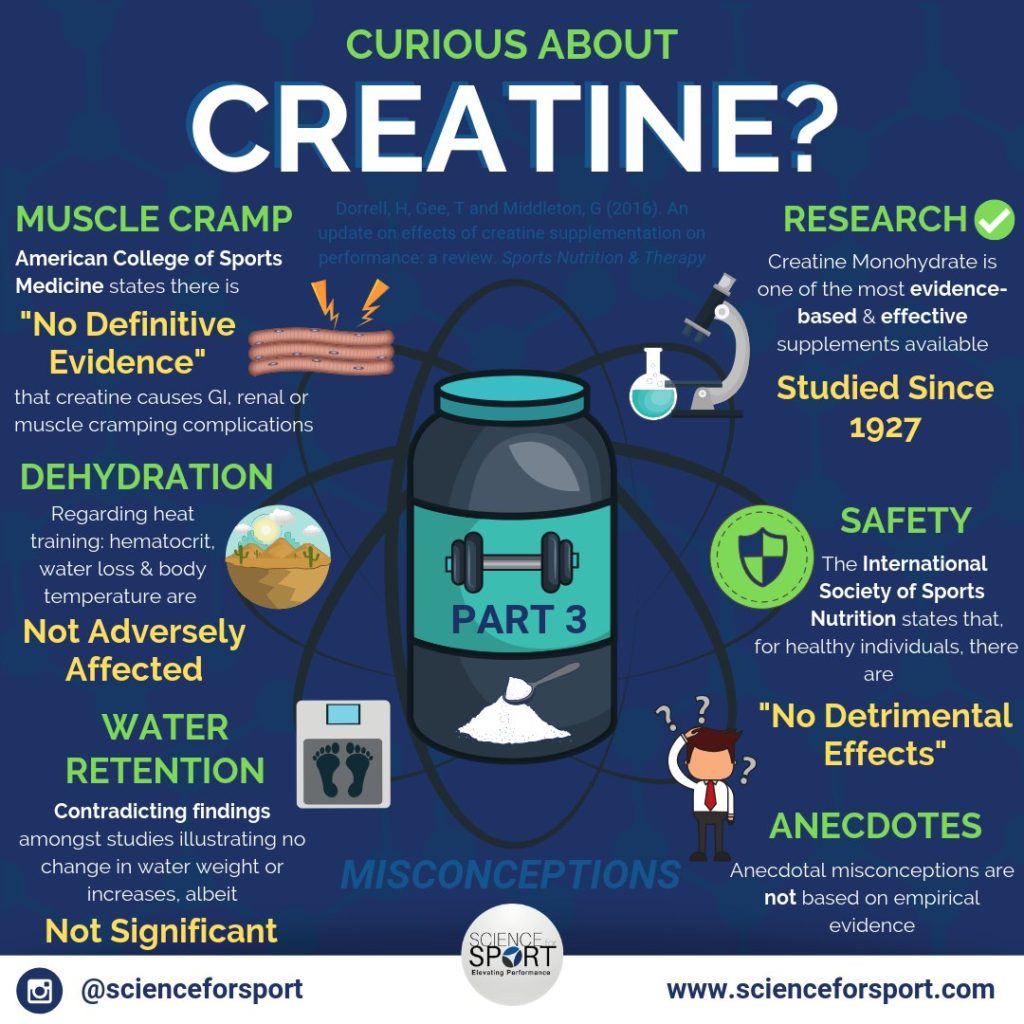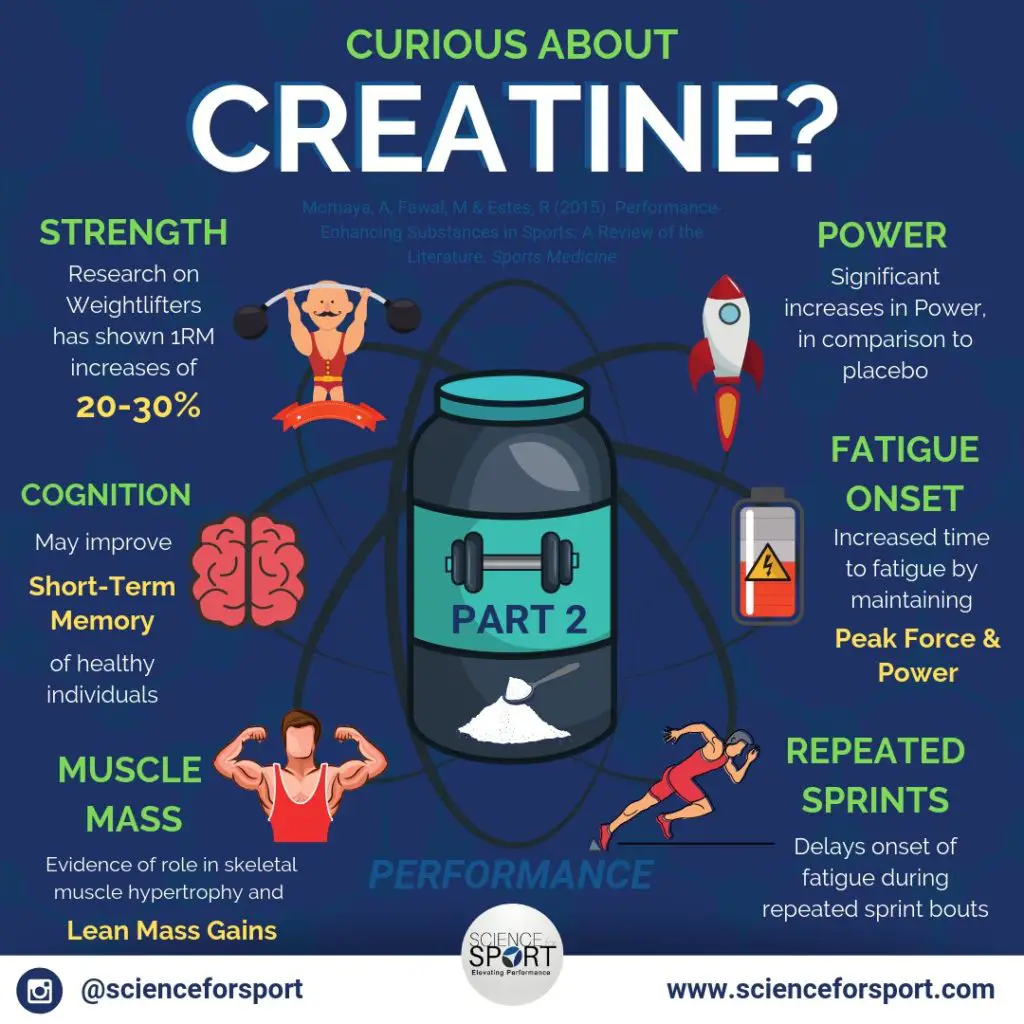As a teen athlete, I was always looking for an advantage over my peers. Whether it was a new workout plan, supplement, or gadget I would always check it out.
My parents were always skeptical. This was especially true when it came to creatine.
- “It’s going to destroy your liver.”
- “Stop putting random supplements in your body.”
- “Don’t you have to drink a ton of water?”
- “How’s it going to impact you later in life?”
All relevant concerns I plan to address this in article and more while tackling the benefits and risks of creatine for teenage athletes.
*Everything will be directed towards creatine monohydrate as it’s the most common creatine supplement used.
What Does Creatine Monohydrate Do?
Creatine is thought to improve strength, increase lean muscle mass, and help the muscles recover more quickly during exercise. This muscular boost may help athletes achieve bursts of speed and energy, especially during short bouts of high-intensity activities such as weight lifting or sprinting.
Creatine and protein work in different ways. In short, creatine leads to more strength during your workout while protein leads to more muscle repair after your workout.
What is Creatine Monohydrate?
Creatine is a substance that is found naturally in muscle cells. It helps your muscles produce energy during heavy lifting or high-intensity exercise.
About 95% of your body’s creatine is stored in muscles in the form of phosphocreatine. The other 5% is found in your brain, kidneys and liver (9Trusted Source).
When you supplement, you increase your stores of phosphocreatine. This is a form of stored energy in the cells, as it helps your body produce more of a high-energy molecule called ATP.
Where Does Creatine Come From in Nature?
Creatine is primarily found in red meat and seafood. For example, a pound of uncooked beef or salmon provides about 1 – 2 g of creatine.
Your body can produce one-third of the creatine it needs through the liver and kidneys. The other two-thirds can be obtained through diet.
Studies have revealed that the body needs about 1 – 3 g of creatine a day to maintain normal stores.
Is Creatine for Teenage Athletes Safe?
New research is emerging suggesting that creatine is not only safe for teens, but very beneficial as well. There have been recent articles suggesting that creatine supplementation is safe for teenage populations.
One study showed that supplemented creatine could potentially increase protection of the brain before a concussion as well as aid and alleviate symptoms associated with concussion recovery. Studies further suggest that teen athletes can benefit from creatine supplementation as it improves recovery, cognition, and fatigue.
Remember more is not better when using supplements. Creatine could potentially have harmful effects if taken incorrectly or in conjunction with kidney damaging medications (nephrotoxic drugs) such as, aspirin, ibuprofen and naproxen (Aleve). Athletes who take these medications regularly should talk to their medical professional before beginning a creatine routine.
Furthermore, a recent study has shown that individuals with asthma may want to be especially careful if they choose to supplement with creatine, suggesting that unfavorable changes in airway inflammation were seen in adolescents who supplemented creatine.
What are the Benefits and Risks of Creatine for Teenage Athletes?
Sports and Creatine
The International Olympic Committee (IOC) and the National Collegiate Athletic Association (NCAA) allow the use of creatine, and it is widely used among professional athletes. In the past, the NCAA allowed member schools and colleges to provide creatine to students with school funds, but this is no longer permitted.
In college, our strength trainer was very particular with what creatine supplements he would let us use.
How Much Creatine Monohydrate Should you Take?
Creatine should be consumed in two different time frames.
The first one is the loading phase and the second one is the maintenance phase.
When you first begin taking creatine you have to go through the loading phase. This requires taking 0.3 grams of creatine for your bodyweight.
So for example, I weight 200 pounds therefore I would need to take roughly 25g of creatine for the first 5 days.
You then enter the maintenance phase, which requires taking 0.03 g compared to your bodyweight, which equates to about 5g a day.
What is the Best Time to Take Creatine?
There are lots of studies with contradictory results, but ultimately you will find it doesn’t matter when you take it.
I always like to mix it in with my whey protein post-workout. Other athletes prefer it pre-workout and some athletes like to take it with their biggest meal of the day.
As long as you get in your daily amount it won’t make any difference when you consume it.
Best Creatine for Teenage Athletes?
I wrote an article reviewing a bunch of different creatine supplements here: Best Creatine for Athletes | Nutritionist Recommended Supplements
When picking a creatine make sure it’s
- Single Ingredient – creatine monohydrate
- 3rd Party Certified – NSF certified for sport
There are hundreds of creatine supplements on the market, but not all of them are right for you.
Here are the three best creatine products for student-athletes:
Wrapping up…
Creatine can help increase athletic performance. I started taking it in college, but wish I had started in high school.
You’ll see your energy increase, strength improve, and overall athletic abilities be enhanced.
It’s not protein or a steroid but another tool to help you on your athletic journey.





